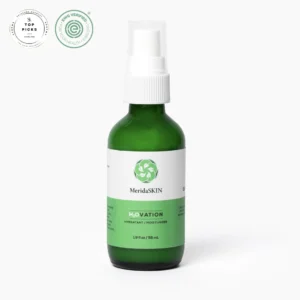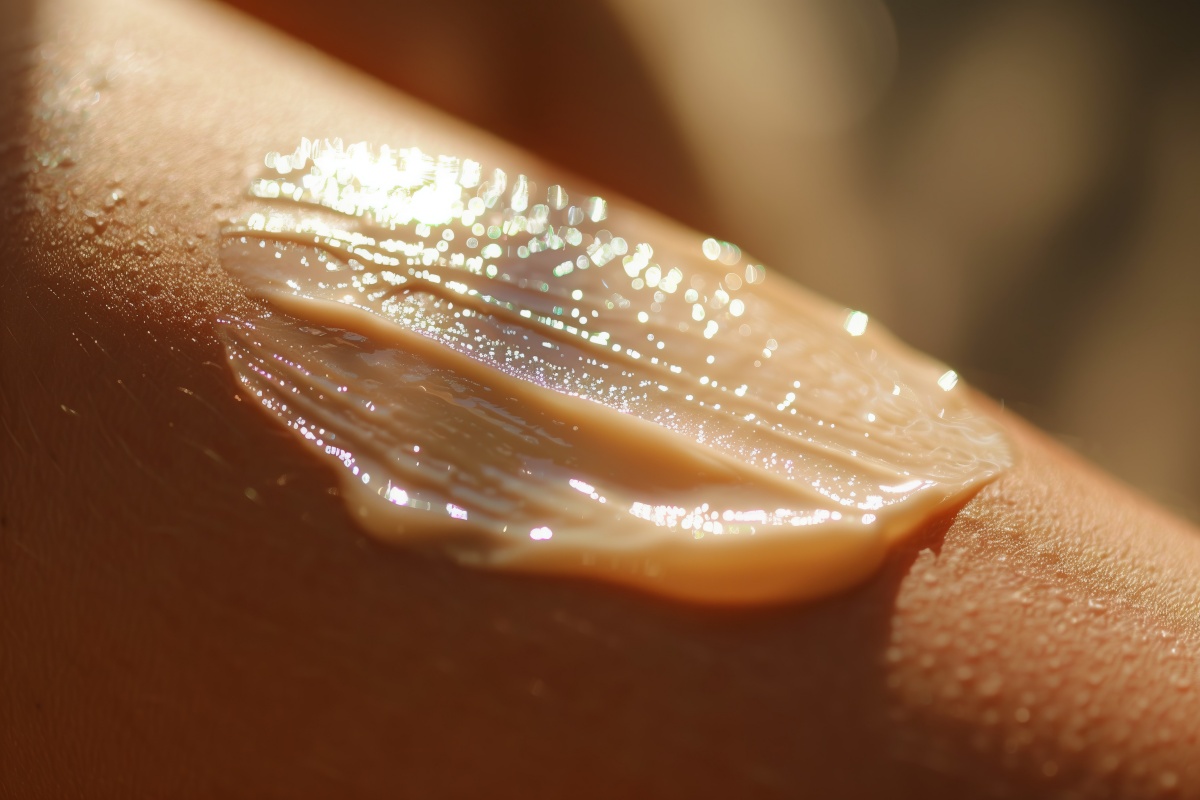It seems like everyone in skincare is talking about shea butter for skin—and that’s for good reason. Shea butter has long been celebrated for its remarkable benefits. This rich, creamy substance, derived from the nuts of the African shea tree, is packed with vitamins, antioxidants, and essential fatty acids that nourish and protect the skin.
Whether you’re dealing with dryness, seeking relief from eczema, or looking to prevent the signs of aging, shea butter offers a natural solution. In this blog post, I’ll share what this ingredient really is, how it can benefit your skin, and how to get the most out of it.
-
 Shea and Squalane Moisturizer for Sensitive Skin$45.00 — or subscribe to save up to 14%
Shea and Squalane Moisturizer for Sensitive Skin$45.00 — or subscribe to save up to 14%
What is Shea Butter?
Shea butter is extracted from the nuts of the Karité (shea) tree across more than twenty nations in Africa. It is known as Karité butter in some parts of the world. Its key components, include:
- Vitamins A and E
- Fatty acids
- Antioxidants
Vitamins A and E are antioxidants and the fatty acids, allantoin, and triterpenes support collagen levels. There are five principal fatty acids in shea butter, with stearic and oleic acids making up over 85% of the fatty acid content on average.
The other three fatty acids in shea butter are arachidic, linoleic, and palmitic.
Unrefined vs. Refined Shea Butter
Shea butter can be sourced unrefined (virgin), or refined, and these have very different profiles. Compared to refined shea butter, unrefined shea butter is darker in color, has a stronger natural odor (usually described as smoky or nutty), has a higher level of fatty acids, and is absorbed more slowly by the skin.
Unrefined shea butter is also more variable from one batch to another, because we are getting what nature gives us, and can include solids such as bits of bark. Finally, refined and unrefined shea butter age differently, with refined shea butter typically lasting longer under proper storage conditions before rancidity sets in.
Top Benefits of Shea Butter for Skin
Shea butter is a popular ingredient for skincare for a reason—it has a wide range of benefits that support every skin type. Here are a few of those key benefits you’ll want to know about.
Moisturization: Deep hydration and its effect on skin softness and elasticity.
Shea butter is one of nature’s best emollients. It improves skin barrier function, which in turn decreases moisture loss through the outermost layers of the skin.
Anti-Inflammatory Properties: Reduction of redness and swelling, beneficial for conditions like eczema and psoriasis. Shea butter has traditional uses in Africa as an anti-inflammatory and analgesic (pain reliever).
Research published in 2012 in the Journal of Complementary and Integrative Medicine showed how shea butter might have these effects. The authors of the article showed that shea butter inhibits (blocks) several key substances known to be involved in human inflammation and pain signaling. These included nitric oxide, several types of cytokines, and cyclooxygenase-2 (COX-2).
Healing and Repair: Promotion of skin healing, useful for minor cuts, burns, and sunburns. Shea butter has been used for centuries in salves and balms for its protective and healing properties.
Anti-Aging: Prevention and reduction of fine lines and wrinkles through enhanced collagen production. Shea butter is commonly used in skin preparations to smooth and soften. Its high levels of triterpenes may help support collagen levels by preventing the destruction of collagen fibers.
Skin Barrier Protection: Strengthening the skin barrier to protect against environmental stressors. Shea butter lubricates the skin and seals cracks in the outermost skin layers, locking moisture in, and undesirable things out.
Best Uses of Shea Butter for Different Skin Concerns
We know that shea butter raw or otherwise is great for skin—but how you can best leverage it? Here are some use cases for when this ingredient can shine!
Daily Moisturizer
Incorporating shea butter into daily skincare routines.
Problem-free skin with healthy levels of sebum production may do just fine without shea butter, but anyone with blemishes, a compromised barrier, or just plain dryness may benefit from incorporating it into a once or twice-daily moisturizer routine.
Dry Skin Relief
Applying shea butter to particularly dry areas such as elbows, knees, and feet.
Shea butter is great for dry and cracked areas of skin. Ideally, it’s applied soon after bathing to help seal moisture in.
Eczema and Psoriasis Treatment
Using shea butter to soothe and manage symptoms of chronic skin conditions.
Shea butter is often used for dry skin conditions caused by inflammation. This includes eczema and psoriasis. The linoleic acid in shea butter is especially restorative for eczema, which is characterized by depleted fatty acids. One study showed that eczema sufferers benefited more from shea butter than from petroleum-based products.
Lip Care
Shea butter as lip balm for chapped lips.
We’ve already established that shea butter is great for dry cracked skin, but did you know that raw shea butter is edible? It’s been used in African cuisine for centuries, making it an excellent choice to use for chapped lips and anywhere around the mouth.
Stretch Marks and Scars
Reducing the appearance of stretch marks and scars with regular application.
While no miracle cure for stretch marks or scars, daily application of shea butter for at least several months may smooth and plump to lessen the appearance of these tormentors.
After-Sun Care
Shea butter for soothing and healing sunburned skin.
Sunburned skin benefits from things that help restore the damaged barrier, and shea butter is certainly excellent at this.
How to Choose the Right Shea Butter
As is the case with many skincare ingredients, not all shea butter is created equal. As you analyze the ingredients of your skincare products, investigate the source of the shea butter used to better understand the quality of the product. This is especially important if you’re using shea butter to make DIY skincare products.
Quality Indicators
The characteristics of shea butter vary, but there are some clues to quality. First, it should not smell unpleasant. Refined shea butter should be essentially odorless, while good raw shea butter will smell faintly smoky or nutty.
If there is a strong or pungent odor, it is probably rancid. Too much moisture in the product at the end of processing can shorten the shelf life and cause it to go bad rather quickly. Some people describe the smell of rancid shea butter as sour or something close to vinegar.
Second, it should melt and spread smoothly on contact with skin, and should not have a gritty feel. Finally, refined shea butter should have a color close to white or ivory, while raw shea butter can vary more from one batch to another, but is usually cream or tan-colored.
The United States Agency for International Development and other companies have suggested a classification system for shea butter, separating it into five grades:
- A (raw or unrefined, extracted using water)
- B (refined)
- C (highly refined and extracted with solvents such as hexane)
- D (lowest uncontaminated grade)
- E (with contaminants)
Unrefined vs. Refined
Unrefined shea butter is higher in fatty acids, and won’t have any residual chemicals from processing. However, some people will opt for refined shea butter for its consistency, lower natural odor, longer shelf life, and importantly, better suitability for oily or clogged skin (owing to its faster absorption rate).
Fair Trade and Organic Options
More than twenty African nations are involved in the making of shea butter. This labor-intensive process, including harvesting, sorting, crushing, grinding, and whipping, is passed down through generations. What’s more, it’s mainly done by women.
When business practices are respectful and fair, an estimated 16 million African women stand to benefit from this earning power. In 2022 the World Economic Forum put the direct benefit to rural women farmers at $200 million USD.
Organizations such as Fairtrade International and Global Shea Alliance (GSA) guarantee that workers are paid at least a minimum price for their product. The GSA’s member database lists affiliated brands and organizations.
Certified organic shea butter is produced without pesticides or synthetic fertilizers. This ensures that these aren’t in the final product. Organic shea butter is typically unrefined (raw).
Common Questions About Shea Butter for Skincare and Beauty
Are there other names for shea butter?
Shea butter has many local names depending on the language. The scientific name for the shea tree is Vitellaria paradoxa. Compliant cosmetic labels in the United States will list shea butter using its INCI name: Butyrospermum parkii.
Can Shea Butter Clog Pores?
Shea butter has a comedogenic rating between zero and 2, and is generally considered non-comedogenic. This means it is unlikely to clog pores or cause acne.
Is Shea Butter Safe for People with Nut Allergies?
Yes. Shea butter comes from nuts and is made entirely of fat and does not contain protein that can trigger an allergic response.
How Often Should I Use Shea Butter?
As often as needed. Some people incorporate shea butter faithfully into their routine morning and night, and others only apply when a problem area crops up.
Can Shea Butter Be Used on Hair?
Definitely. Shea butter is a superstar for smoothing hair and combating frizz. It can be argued that it is preferable to coconut oil, which has high comedogenicity (pore-clogging potential).
Can Shea Butter Provide Sun Protection?
Shea butter naturally has a sun protection factor (SPF) of about 3 to 4. On its own, this isn’t enough to effectively protect against sunburn and photoaging, but it is a bonus.
Is Shea Butter Good or Bad for the Planet?
Shea trees are one of the largest carbon sinks (storage places) in Africa. The shea parklands are considered protective against environmental degradation. The nuts are mainly harvested by hand, which is low impact for the climate.
Shea butter has been considered an environmentally friendly alternative to vegetable oils (such as palm oil). Most of the carbon footprint associated with shea butter comes from the burning of wood in post-harvest processing and extraction.
This star ingredient could enjoy a low-carbon future if resources are devoted to reducing greenhouse gas emissions in post-harvest.
Shea Butter for Skin: A Star Ingredient
Shea butter is one of those elusive multi-functional feel-good skincare ingredients. It is agrees with most skin types, is outstanding at moisturization and barrier repair, and has minimal potential to clog pores, irritate, or elicit allergic reactions.
Moreover, its cultivation can actually be good for the planet, and when sourced conscientiously, can empower millions of African women.

Shannon L. Johnson NP-C
Founder & Formulator, MeridaSKIN
Shannon is a nurse practitioner, and much of her career has served vulnerable populations at a community health center. She holds degrees from the University of Pennsylvania and Simmons University, and completed post-graduate training at the University of Massachusetts Boston. She tackled the science of cosmetic formulating to solve her own skin struggle with rosacea. Shannon was born in Oregon, raised in Eastern Massachusetts and has passionate ties to the Pacific Northwest, New England, and the mid-Atlantic. She lives on Boston's North Shore with her husband, two kids and mischievous Wheaten Terrier. She and her family pass the seasons by playing in water (liquid and solid).


Recent Comments